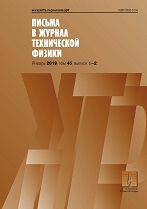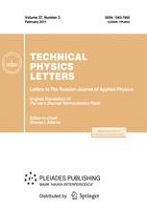|
This article is cited in 16 scientific papers (total in 16 papers)
Adaptive properties of spiking neuromorphic networks with synapses based on memristive elements
K. È. Nikiruyab, A. V. Emelyanovab, V. V. Ryl'kovac, A. V. Sitnikovad, V. A. Deminabe
a National Research Centre "Kurchatov Institute", Moscow
b Moscow Institute of Physics and Technology (State University), Dolgoprudnyi, Moscow oblast, Russia
c Kotelnikov Institute of Radioengineering and Electronics, Fryazino Branch, Russian Academy of Sciences
d Voronezh State Technical University
e Lobachevsky State University of Nizhny Novgorod
Abstract:
Neuromorphic computing networks (NCNs) with synapses based on memristors (resistors with memory) can provide a much more effective approach to device implementation of various network algorithms as compared to that using traditional elements based on complementary technologies. Effective NCN implementation requires that the memristor resistance can be changed according to local rules (e.g., spike-timing-dependent plasticity (STDP)). We have studied the possibility of this local learning according to STDP rules in memristors based on (Co$_{0.4}$Fe$_{0.4}$B$_{0.2}$)$_{x}$(LiNbO$_{3}$)$_{1-x}$ composite. This possibility is demonstrated on the example of NCN comprising four input neurons and one output neuron. It is established that the final state of this NCN is independent of its initial state and determined entirely by the conditions of learning (sequence of spikes). Dependence of the result of learning on the threshold current of output neuron has been studied. The obtained results open prospects for creating autonomous NCNs capable of being trained to solve complex cognitive tasks.
Received: 25.01.2019
Revised: 25.01.2019
Accepted: 28.01.2019
Citation:
K. È. Nikiruy, A. V. Emelyanov, V. V. Ryl'kov, A. V. Sitnikov, V. A. Demin, “Adaptive properties of spiking neuromorphic networks with synapses based on memristive elements”, Pisma v Zhurnal Tekhnicheskoi Fiziki, 45:8 (2019), 19–23; Tech. Phys. Lett., 45:4 (2019), 386–390
Linking options:
https://www.mathnet.ru/eng/pjtf5461 https://www.mathnet.ru/eng/pjtf/v45/i8/p19
|


|





 Contact us:
Contact us: Terms of Use
Terms of Use
 Registration to the website
Registration to the website Logotypes
Logotypes








 Citation in format
Citation in format 
